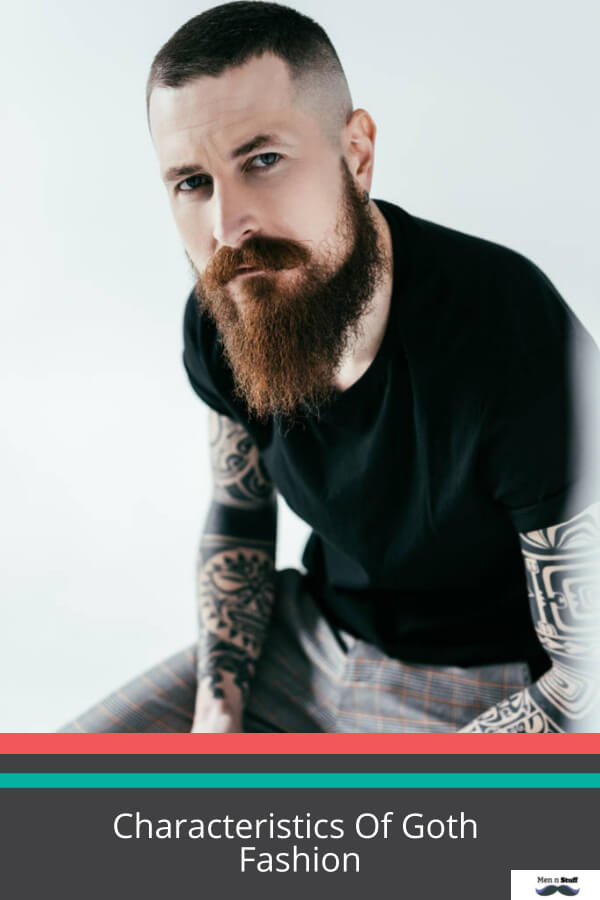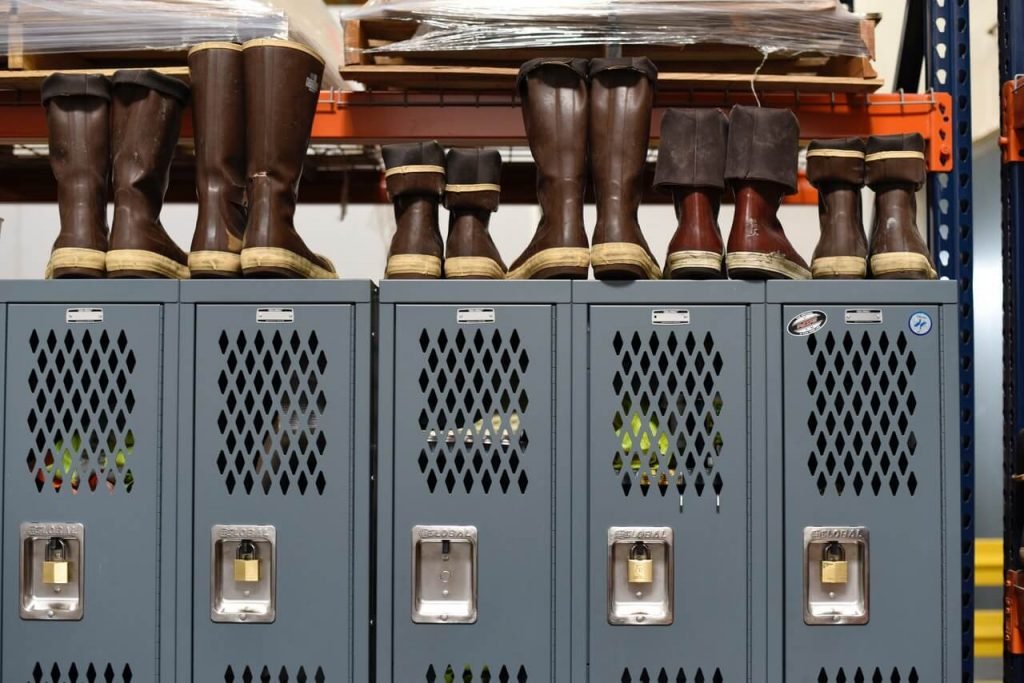Goth fashion is characterized by dark, dramatic attire. Key elements include black clothing, leather, lace, corsets, and platform boots. It often incorporates Gothic jewelry and makeup, emphasizing pale skin, and dark eyeliner.

Gothic Fashion History
Gothic fashion has its roots in the Romantic movement of the early 19th century. Romantic artists were drawn to the dark and mysterious, and they often depicted their subjects in somber clothing and dramatic poses. This aesthetic was also reflected in the fashion of the time, with women wearing long, flowing dresses in dark colors and men wearing black suits and capes.
Gothic fashion became more popular in the late 19th century, thanks in part to the writings of Edgar Allan Poe and Bram Stoker. These authors created a world of vampires, ghosts, and other creatures of the night, and their work inspired people to dress in a way that reflected this dark and macabre aesthetic.
In the early 20th century, Gothic fashion was associated with the bohemian and avant-garde movements. Artists such as Frida Kahlo and Salvador Dali often dressed in Gothic clothing, and they used their fashion choices to express their individuality and defiance of convention.
In the 1970s, Gothic fashion experienced a revival. This was due in part to the rise of punk rock music, which shared many of the same aesthetic sensibilities as Gothic. Punk bands such as Siouxsie and the Banshees and Bauhaus were known for their dark and dramatic clothing, and they inspired a new generation of Gothic fans.
Gothic fashion has continued to evolve over the years, and today it is a diverse and eclectic style. Some Goths prefer to dress in a traditional Victorian style, while others prefer a more modern look. There are also many different subgenres of Gothic fashion, such as Deathrock, Cybergoth, and Lolita.
Regardless of their personal style, all Goths share a love of the dark and mysterious. They are drawn to the macabre and the unusual, and they use their fashion to express their individuality and creativity.
What Are The Characteristics Of Goths?
Goth fashion is more than just a clothing style – it’s a unique cultural statement that transcends time. Known for its dark, mysterious, and romantic essence, this style has etched its mark in the world of fashion. Though not for the faint-hearted, it carries an undeniable allure that is appealing to many. Here’s a detailed list of some of the most distinctive characteristics of Goth fashion.
- Predominance of Black
One cannot think of Goth fashion without the prevalence of black. This colour sets the base for the dramatic and mysterious vibe that is synonymous with gothic attire. From black shirts and trousers to black makeup, jewelry, and accessories, it is a dominant feature of the style. - Victorian Influence
Gothic fashion borrows heavily from Victorian-era mourning clothes, mirroring the high collars, corsets, petticoats, and top hats commonly worn during that period. These elements add a sense of vintage elegance to the gothic aesthetic. - Layering
Layering is another crucial aspect of this style. Goths often layer their clothing to add depth and detail to their outfit. This might include wearing a lace skirt over a pair of black leggings or a leather jacket on top of a black velvet dress. - Dramatic Makeup
In Goth fashion, the makeup is just as important as the clothing. Goths often wear heavy eyeliner, dark eyeshadow, and dramatic lipstick colors, usually in a shade of black or deep red. The goal is to create a striking, dramatic look. - Piercings and Tattoos
Statements of self-expression, piercings, and tattoos also play a significant role in Goth fashion. From simple ear piercings to more intricate body modifications, these elements can be as distinctive as the clothing. - Dark Romanticism
Lastly, there is an air of dark romanticism that flows through Goth fashion. A fascination with the macabre, supernatural, and existential themes often finds expression through clothing choices.
| Characteristics | Description |
|---|---|
| Predominance of Black | Central color theme for clothes, accessories, and makeup |
| Victorian influence | Incorporation of Victorian-era features |
| Layering | Styling technique essential to goth fashion |
| Dramatic makeup | Bold and impactful visual aesthetic |
| Piercings and Tattoos | Forms of personal expression and identity |
| Dark Romanticism | Fascination with the mysterious and the macabre |
How Do You Style Gothic Clothes?
To style Gothic clothes, you can start by choosing a base outfit in dark colors, such as black, purple, or red. You can then add layers and accessories to create your own unique look.
Here are a few tips for styling Gothic clothes:
- Choose the right fabrics. Gothic clothing is often made from heavy fabrics such as velvet, leather, and lace. These fabrics can help to create a dark and mysterious look.
- Layer your clothes. Layering is a great way to add interest and depth to your Gothic outfit. You can layer different tops, bottoms, and jackets to create a complex and unique look.
- Add accessories. Gothic accessories can help to complete your look and add a touch of personality. Some popular Gothic accessories include chokers, crosses, skulls, and bats.
- Don’t be afraid to experiment. There are no rules when it comes to Gothic fashion. Be creative and experiment with different styles and trends until you find a look that you love.
Here are some specific outfit ideas:
- For a casual Gothic look, pair a black band t-shirt with black ripped jeans and combat boots. Add a choker and a few rings to complete the look.
- For a more formal Gothic look, try a black velvet dress with lace trim. Pair the dress with black heels and a statement necklace.
- For a unique and eye-catching Gothic look, try a cybergoth outfit. This could include a black latex dress, platform boots, and a gas mask.
How To Dress Goth In Normal Clothes?
A common misconception about the style is that it has to be expensive or complicated in order for someone to wear it. In reality, all goth looks are created from a combination of three elements: darkness, asymmetry, and texture (Reich 2011). The key difference between what might be considered more “gothic” clothes and regular clothing items is that they have an element of spooky darkness with them. For example, you can find plenty of dark-colored jeans at any store but if you add some accessories like studded leather bracelets or chains around your neck then those same jeans would make a good base for building a complete outfit. It doesn’t matter how much money one spends on their wardrobe – as long as there’s some darkness in there, it’s going to be considered goth.
This is a story about the dark side of style: what happens when fashion goes from looking good to feeling bad? What do we think makes up goth style and how can you tell if someone might not just like this particular look but actually has an unhealthy relationship with their clothes? The term “goth” originally referred to any person who dressed in black-centric clothing as well as mourning attire (Reich 2011). In addition, many would wear makeup that was quite dramatic and pale skin – which further emphasizes the death element (Harris 2012). This association between death/darkness is still very prevalent today; however, some people may mistake these elements for being more than just a style choice and might try to diagnose the person as having mental illness or depression (Harris 2012).
Some characteristics of goth fashion include wearing darker colors, most notably black. In addition, many people display symbols that are dark in nature such as skulls. When someone wears these items it can be seen as almost like an offering for death; they’re paying respect to their own mortality and by doing so acknowledging how precious life is. This may create anxiety if worn too often because at any point this could all change – we don’t know when our last day will be! What’s more interesting about this type of clothing is that it looks very awesome on others (many goth bands have themes based on what they wear).
Can You Dress Goth Without Being Goth?
Is it possible to dress Goth without being goth? That is an excellent question, one that many people wonder about. What does a person have to do in order to be Goth – wear all black and go out on Halloween night haunting the living hell out of everyone (not really)? The answer is yes! It’s possible for someone to enjoy dressing up in darker colors and still not identify as Goth. For example, if you work at a funeral home or just want something different from what other people are wearing then you could dress like this outside of any context surrounding death. However, it may take some trial and error before finding clothing combinations that look good together because those who tend towards darkness can’t find anything they like unless they’re wearing black.
I’m not sure what you’re getting at, but I would say that there are various factors that can contribute to someone identifying as Goth depending on where they live and how they feel about the term itself. What is considered normal in one area may be seen as abnormal or even scary in another. For example, if a person lives somewhere with a lot of conservative views then it might be very difficult to find clothing that fits their style because their community won’t allow for this type of personal expression. On the other hand, those who don’t conform will always have some way of expressing themselves through fashion no matter what society says! And sometimes people just want something different from everyone else so Goth fashion could work regardless of any context.
The style of goth fashion is often characterized by dark clothing but there are many variations to the aesthetic. For example, some people may want to wear lighter pieces during the day and change into darker clothes at night for a more dramatic effect. Other individuals might prefer wearing all black in order to appear mysterious. They could also choose specific fabrics that make it easier or harder for other people to read emotions on their faces! There’s also a variety when it comes to makeup such as eyeliner which can range from being very thin and subtle up until someone wants an intense smoky eye look that’s big and bold enough for any drama queen out there! The possibilities really do go on…and they’re endless!
References:
https://www.fashiongonerogue.com/trends-characteristics-of-gothic-fashion/
https://www.bikerringshop.com/blogs/fashion/features-and-trends-of-gothic-fashion

